 Technology peripherals
Technology peripherals
 AI
AI
 UCSD, MIT and other Chinese teams teach robot dogs to perceive the 3D world! With the M1 chip, you can climb stairs and cross obstacles.
UCSD, MIT and other Chinese teams teach robot dogs to perceive the 3D world! With the M1 chip, you can climb stairs and cross obstacles.
UCSD, MIT and other Chinese teams teach robot dogs to perceive the 3D world! With the M1 chip, you can climb stairs and cross obstacles.
Recently, researchers from UCSD, IAIFI and MIT institutions used a new neural volumetric memory architecture (NVM) to teach a robot dog to perceive the three-dimensional world.
Using this technology, the robot dog can climb stairs, cross gaps, climb obstacles, etc. through a single neural network - completely autonomously, without the need for a remote control.
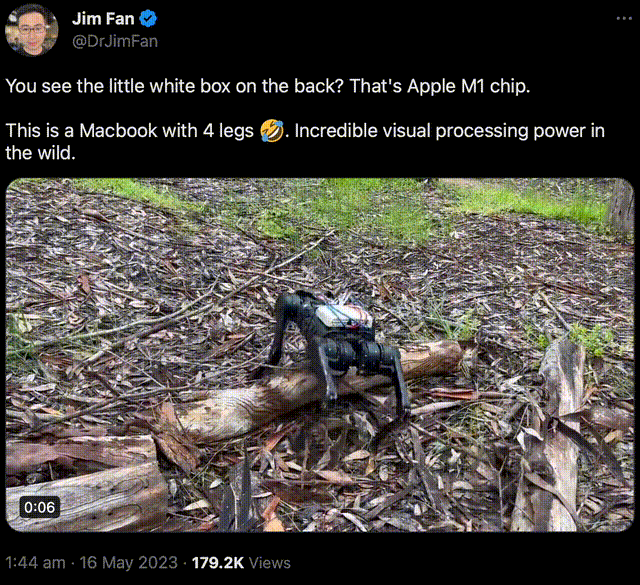
I wonder if you’ve noticed the white box on the dog’s back?
It is equipped with Apple’s M1 chip, which is responsible for running the visual processing tasks of the robot dog. Moreover, the team removed it from a Mac.
It is not difficult to see that this robot dog from MIT can easily climb a section of branches in front of it without any effort (basically).
A MacBook with 4 legs?
As we all know, it is very difficult for robot dogs and other legged robots to cross uneven roads.
The more complex the road conditions are, the more obstacles there are that cannot be seen.
In order to solve the problem of "partially observable environment", SOTA's current visual-motion technology connects image channels through frame-stacking.
However, this simple processing method lags far behind current computer vision technology, which can explicitly model optical flow and specific 3D geometries.
Inspired by this, the team proposed a neural volume memory architecture (NVM) that can fully take into account the SE(3) equivalence of the three-dimensional world.
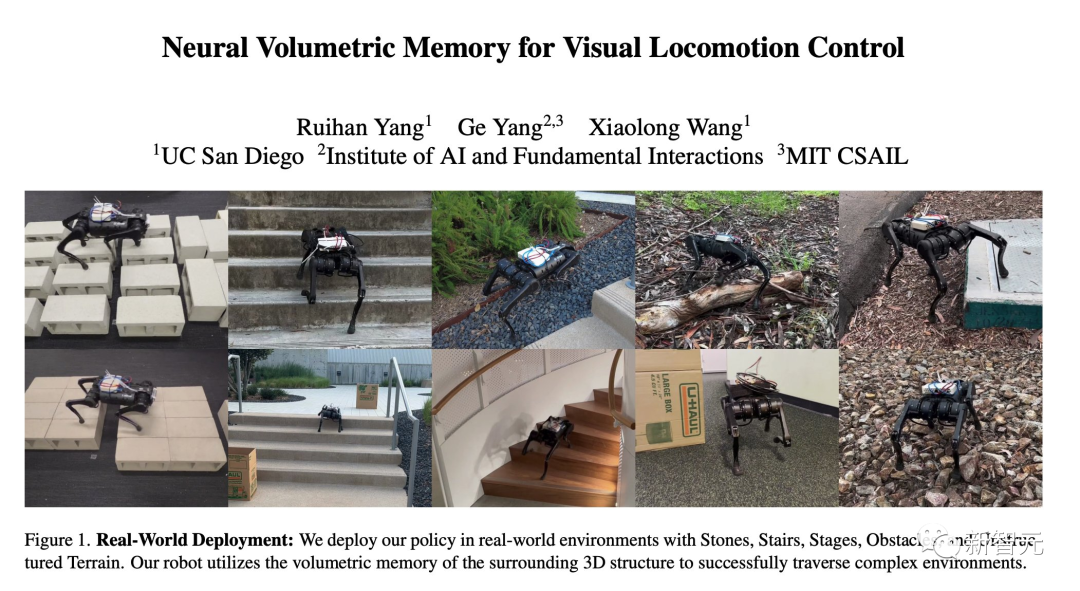
## Project address: https://rchalyang.github.io/NVM/
Unlike previous methods, NVM is a volumetric format. It aggregates feature volumes from multiple camera views into the robot's egocentric frame, allowing the robot to better understand its surroundings.
The test results show that after using neural volumetric memory (NVM) to train leg movements, the robot's performance on complex terrain is significantly better than previous technologies.
In addition, the results of the ablation experiments show that the content stored in the neural volumetric memory captures enough geometric information to reconstruct the 3D scene.
Experiments in the real world
To validate in different real-world scenarios outside of simulation, the team conducted experiments in indoor and outdoor scenarios All experiments were conducted.

When the robot dog finds that an obstacle suddenly appears in front of it, it will directly choose to avoid it.
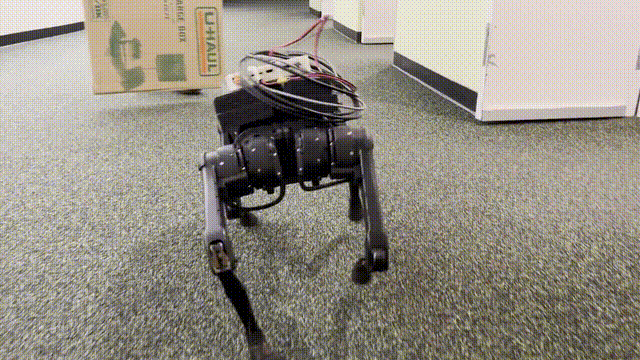
There seems to be no problem walking on the rocky ground, although it is still more laborious than on flat ground. Some.

################################################################################################################################################## It's possible to overcome obstacles that are relatively big compared to yourself, but you can still overcome them if you work hard. ######

Using the previous recognition control technology, the puppy’s hind legs obviously made errors in judging the distance. It stepped into a ditch and overturned, which failed.

After adopting the NVM proposed by MIT, the puppy crossed the ditch, stable happiness, success!
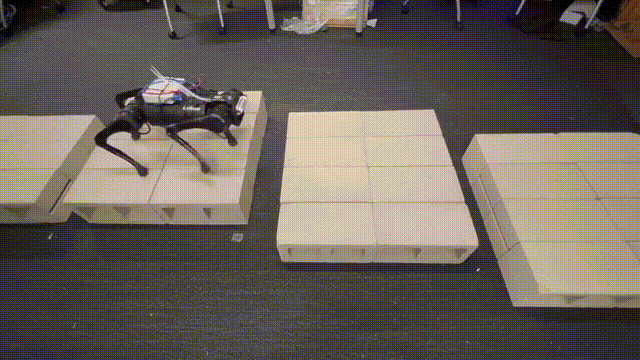
# Using the previous recognition control technology, the puppy missed the mark with its first kick, and the dog's head grabbed the ground and failed.
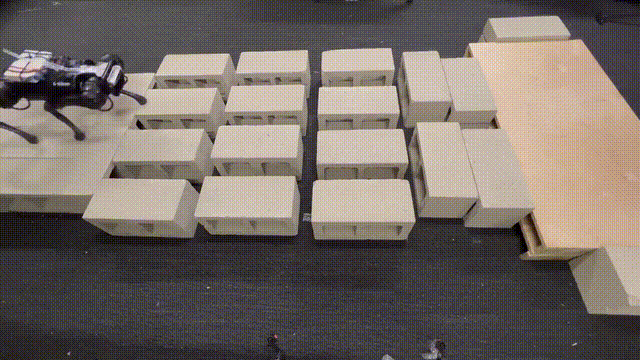
After adopting the NVM proposed by MIT, the puppy walked smoothly through the matrix.
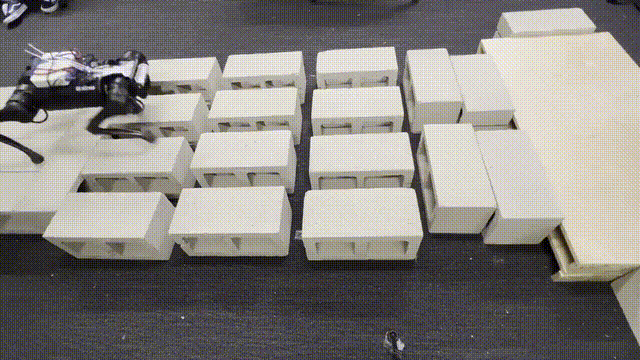
Volume memory for leg movements
Using an egocentric camera perspective is essentially a problem of dealing with "partially-observable environment" (Partially-Observed).
To make the control problem concrete, the robot needs to gather information from previous frames and correctly infer occluded terrain.
During movement, the camera mounted directly on the robot chassis undergoes drastic and sudden position changes.
In this way, in the process of characterizing a series of pictures, it becomes very important that a single frame can be placed in the correct position.
To this end, the concept of neural volume memory (NVM) proposed by the team can convert a series of input visual information into scene features for 3D depiction and then output.

Learning NVM through self-supervision
Although "behavioral cloning goal" Sufficient to generate a good policy, but targeting equivariance of translation and rotation, automatically provides an independent, self-supervised learning objective for neural volumetric memory.
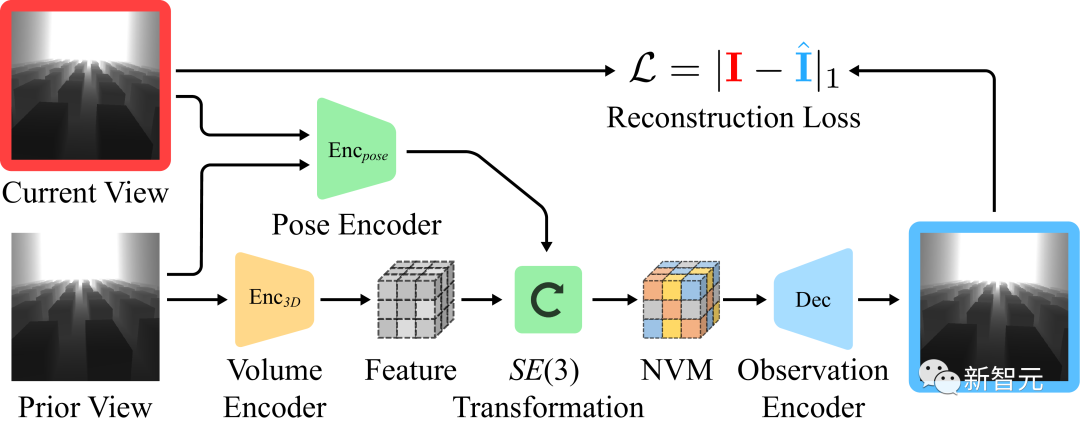
Self-supervised learning: The research team trained an independent decoder. Let it predict visual observations in different frames by taking a visual observation and estimating the transition between two frames.
#As shown in the image above, it can be assumed that the surrounding 3D scene remains unchanged between frames. Since the camera is looking forward, we can normalize the feature volume from previous frames and use it to predict subsequent images.
Visual reconstruction of the decoder
The first image shows the robot moving in the environment, and the second image is the input visual observation, The third picture is the visual observation effect using 3D feature volume and estimated picture synthesis.
For the visual observation of the input, the research team applied a large number of data enhancements to the images to improve the robustness of the model.
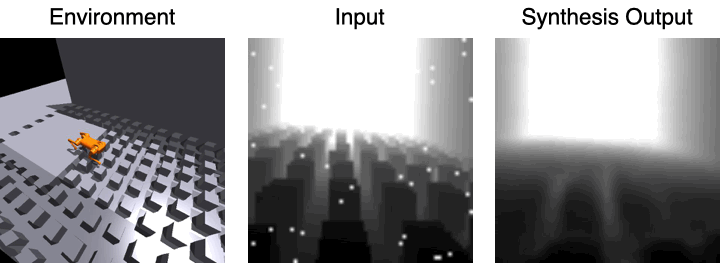

Ruihan Yan

His research interests are reinforcement learning, machine learning, robotics, etc. Specifically, he wants to build intelligent agents that use information from different sources to make decisions.
Ge Yang

Ge Yang’s research involves two sets of related issues. The first group is to improve learning by revisiting the way we represent knowledge in neural networks and how knowledge is transferred across distributions. The second group looks at reinforcement learning through the lens of theoretical tools such as neural tangent kernels, non-Euclidean geometry, and Hamiltonian dynamics.
Xiaolong Wang
 ##Xiaolong Wang is An Assistant Professor in the ECE Department at UC San Diego. He is a member of the robotics team at the TILOS National Science Foundation Institute for Artificial Intelligence.
##Xiaolong Wang is An Assistant Professor in the ECE Department at UC San Diego. He is a member of the robotics team at the TILOS National Science Foundation Institute for Artificial Intelligence.
He received his PhD in robotics from Carnegie Mellon University and did postdoctoral research at the University of California, Berkeley.
The above is the detailed content of UCSD, MIT and other Chinese teams teach robot dogs to perceive the 3D world! With the M1 chip, you can climb stairs and cross obstacles.. For more information, please follow other related articles on the PHP Chinese website!

Hot AI Tools

Undresser.AI Undress
AI-powered app for creating realistic nude photos

AI Clothes Remover
Online AI tool for removing clothes from photos.

Undress AI Tool
Undress images for free

Clothoff.io
AI clothes remover

Video Face Swap
Swap faces in any video effortlessly with our completely free AI face swap tool!

Hot Article

Hot Tools

Notepad++7.3.1
Easy-to-use and free code editor

SublimeText3 Chinese version
Chinese version, very easy to use

Zend Studio 13.0.1
Powerful PHP integrated development environment

Dreamweaver CS6
Visual web development tools

SublimeText3 Mac version
God-level code editing software (SublimeText3)

Hot Topics
 1666
1666
 14
14
 1425
1425
 52
52
 1327
1327
 25
25
 1273
1273
 29
29
 1252
1252
 24
24
 How to use the chrono library in C?
Apr 28, 2025 pm 10:18 PM
How to use the chrono library in C?
Apr 28, 2025 pm 10:18 PM
Using the chrono library in C can allow you to control time and time intervals more accurately. Let's explore the charm of this library. C's chrono library is part of the standard library, which provides a modern way to deal with time and time intervals. For programmers who have suffered from time.h and ctime, chrono is undoubtedly a boon. It not only improves the readability and maintainability of the code, but also provides higher accuracy and flexibility. Let's start with the basics. The chrono library mainly includes the following key components: std::chrono::system_clock: represents the system clock, used to obtain the current time. std::chron
 How to understand DMA operations in C?
Apr 28, 2025 pm 10:09 PM
How to understand DMA operations in C?
Apr 28, 2025 pm 10:09 PM
DMA in C refers to DirectMemoryAccess, a direct memory access technology, allowing hardware devices to directly transmit data to memory without CPU intervention. 1) DMA operation is highly dependent on hardware devices and drivers, and the implementation method varies from system to system. 2) Direct access to memory may bring security risks, and the correctness and security of the code must be ensured. 3) DMA can improve performance, but improper use may lead to degradation of system performance. Through practice and learning, we can master the skills of using DMA and maximize its effectiveness in scenarios such as high-speed data transmission and real-time signal processing.
 How to handle high DPI display in C?
Apr 28, 2025 pm 09:57 PM
How to handle high DPI display in C?
Apr 28, 2025 pm 09:57 PM
Handling high DPI display in C can be achieved through the following steps: 1) Understand DPI and scaling, use the operating system API to obtain DPI information and adjust the graphics output; 2) Handle cross-platform compatibility, use cross-platform graphics libraries such as SDL or Qt; 3) Perform performance optimization, improve performance through cache, hardware acceleration, and dynamic adjustment of the details level; 4) Solve common problems, such as blurred text and interface elements are too small, and solve by correctly applying DPI scaling.
 What is real-time operating system programming in C?
Apr 28, 2025 pm 10:15 PM
What is real-time operating system programming in C?
Apr 28, 2025 pm 10:15 PM
C performs well in real-time operating system (RTOS) programming, providing efficient execution efficiency and precise time management. 1) C Meet the needs of RTOS through direct operation of hardware resources and efficient memory management. 2) Using object-oriented features, C can design a flexible task scheduling system. 3) C supports efficient interrupt processing, but dynamic memory allocation and exception processing must be avoided to ensure real-time. 4) Template programming and inline functions help in performance optimization. 5) In practical applications, C can be used to implement an efficient logging system.
 Steps to add and delete fields to MySQL tables
Apr 29, 2025 pm 04:15 PM
Steps to add and delete fields to MySQL tables
Apr 29, 2025 pm 04:15 PM
In MySQL, add fields using ALTERTABLEtable_nameADDCOLUMNnew_columnVARCHAR(255)AFTERexisting_column, delete fields using ALTERTABLEtable_nameDROPCOLUMNcolumn_to_drop. When adding fields, you need to specify a location to optimize query performance and data structure; before deleting fields, you need to confirm that the operation is irreversible; modifying table structure using online DDL, backup data, test environment, and low-load time periods is performance optimization and best practice.
 How to measure thread performance in C?
Apr 28, 2025 pm 10:21 PM
How to measure thread performance in C?
Apr 28, 2025 pm 10:21 PM
Measuring thread performance in C can use the timing tools, performance analysis tools, and custom timers in the standard library. 1. Use the library to measure execution time. 2. Use gprof for performance analysis. The steps include adding the -pg option during compilation, running the program to generate a gmon.out file, and generating a performance report. 3. Use Valgrind's Callgrind module to perform more detailed analysis. The steps include running the program to generate the callgrind.out file and viewing the results using kcachegrind. 4. Custom timers can flexibly measure the execution time of a specific code segment. These methods help to fully understand thread performance and optimize code.
 Quantitative Exchange Ranking 2025 Top 10 Recommendations for Digital Currency Quantitative Trading APPs
Apr 30, 2025 pm 07:24 PM
Quantitative Exchange Ranking 2025 Top 10 Recommendations for Digital Currency Quantitative Trading APPs
Apr 30, 2025 pm 07:24 PM
The built-in quantization tools on the exchange include: 1. Binance: Provides Binance Futures quantitative module, low handling fees, and supports AI-assisted transactions. 2. OKX (Ouyi): Supports multi-account management and intelligent order routing, and provides institutional-level risk control. The independent quantitative strategy platforms include: 3. 3Commas: drag-and-drop strategy generator, suitable for multi-platform hedging arbitrage. 4. Quadency: Professional-level algorithm strategy library, supporting customized risk thresholds. 5. Pionex: Built-in 16 preset strategy, low transaction fee. Vertical domain tools include: 6. Cryptohopper: cloud-based quantitative platform, supporting 150 technical indicators. 7. Bitsgap:
 How does deepseek official website achieve the effect of penetrating mouse scroll event?
Apr 30, 2025 pm 03:21 PM
How does deepseek official website achieve the effect of penetrating mouse scroll event?
Apr 30, 2025 pm 03:21 PM
How to achieve the effect of mouse scrolling event penetration? When we browse the web, we often encounter some special interaction designs. For example, on deepseek official website, �...



